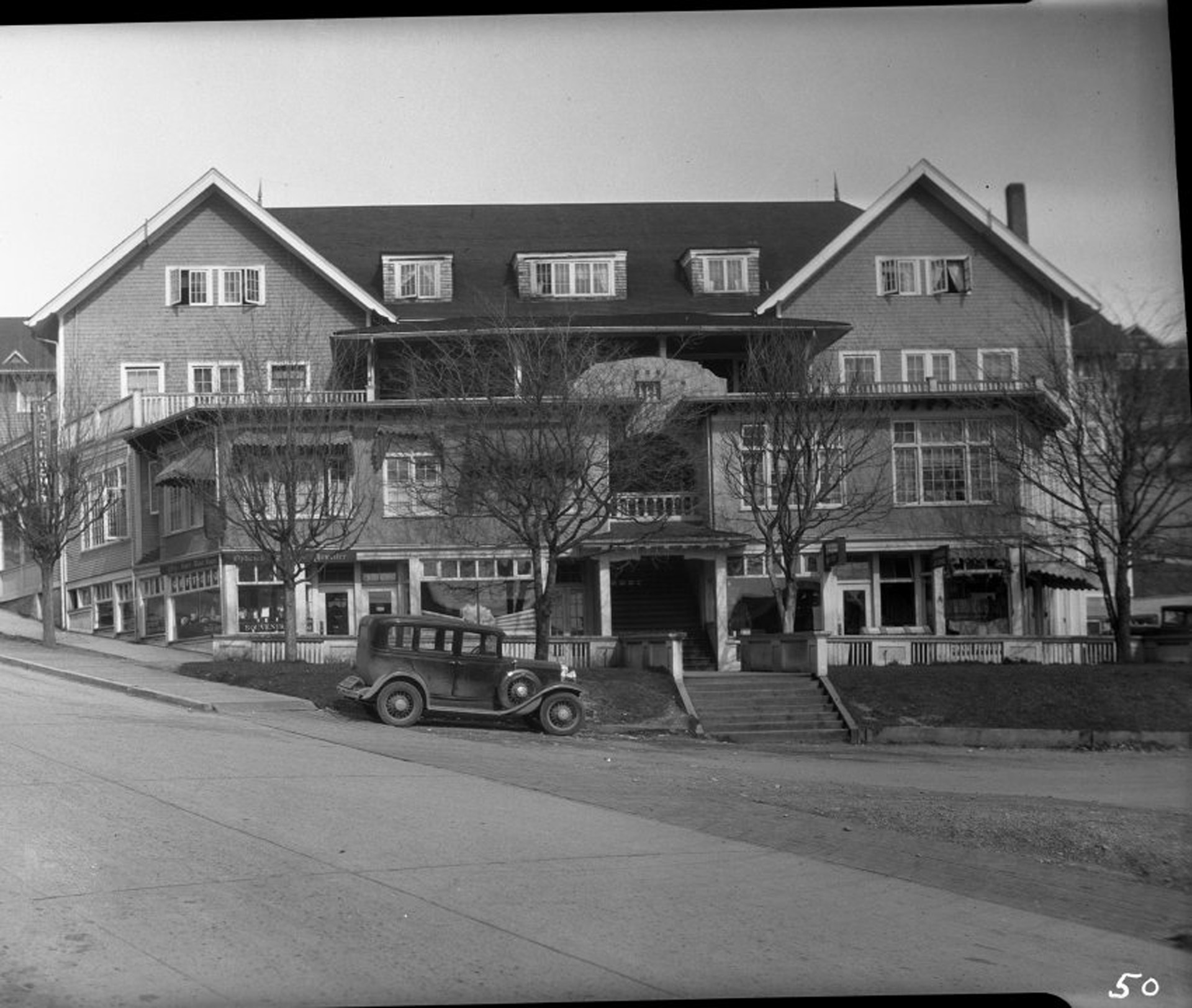Photo History of Powell River
A Brief Pre-contact History
of the City of Powell River
The City of Powell River was established as a company town in 1910 by the Powell River Company to produce newsprint. However, the history of the settlement reaches further back in time. The paper mill was located on the traditional territory of the Tla’amin Nation on the site of the village known as tiskʷat. Archaeological sites indicate that the Tla’amin culture occupied the region for at least 7,600 years before present, but further studies may push that date substantially into the past. Evidence of the extent of Tla’amin land use in the past can be seen in the fishing structures, clam gardens, and canoe runs that abound along the entire intertidal zone of the City of Powell River and beyond. The extent of these structures and other archaeological sites suggests the area resources sustained a population much larger than exists here today.
Prior to contact, Tla’amin territory was vast and heavily populated. Historically, the Tla’amin, and adjacent First Nations of Klahoose, Homalco and K’omoks were one people without borders. Oral traditions form a collective living memory, which when combined with archaeological data, provide a more complete picture of the past. The map, entitled ʔəms gɩǰɛ (Our Land), presented here documents the place names as remembered by the residents of the Tla’amin Nation.
čɛ čɛ ha θɛšt
We welcome you to our presentation of place names for all our traditional territories. We raise our hands to all our ancestors who have left documented stories of their travels up and down the coast. We also thank our present elders who have shared their stories with us. Their combined stories show that they travelled extensively to trade for what they needed. They had many sites in which they could gather different foods required for a healthy life.
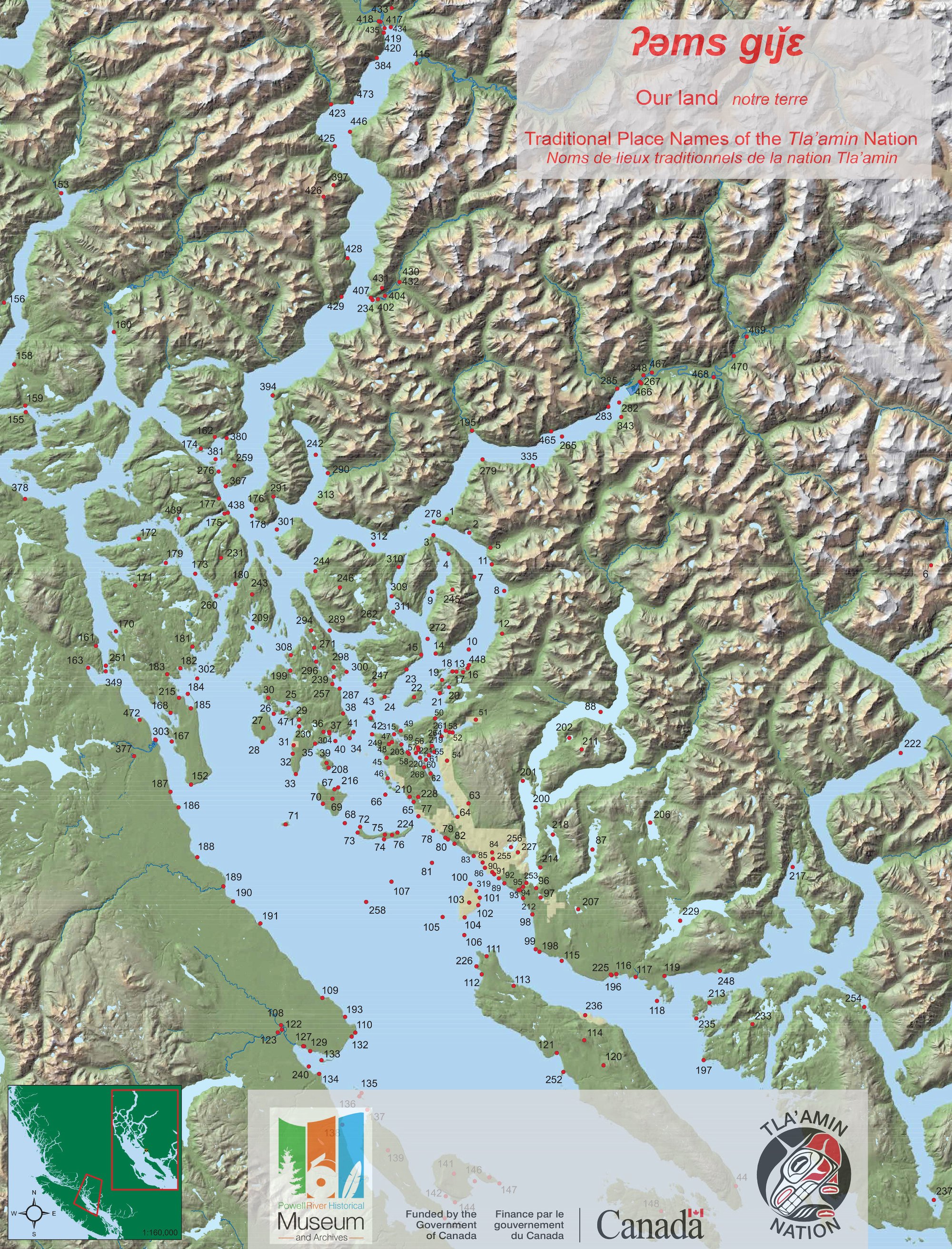
ƛič̓aʔaq
Klee chah ahq / English Name Unknown
Meaning:to come out into the open
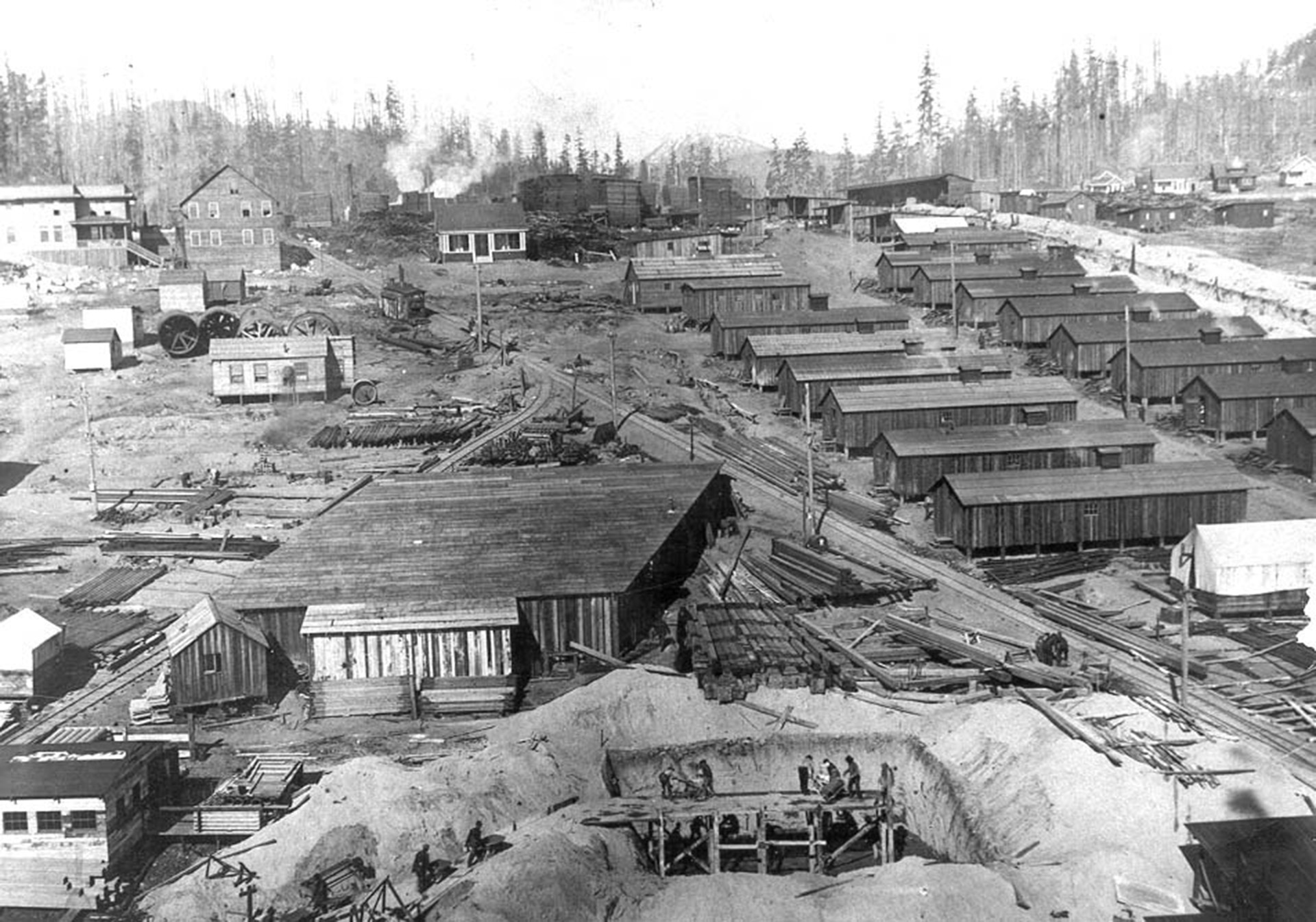
The Powell River Company Townsite, 1910.
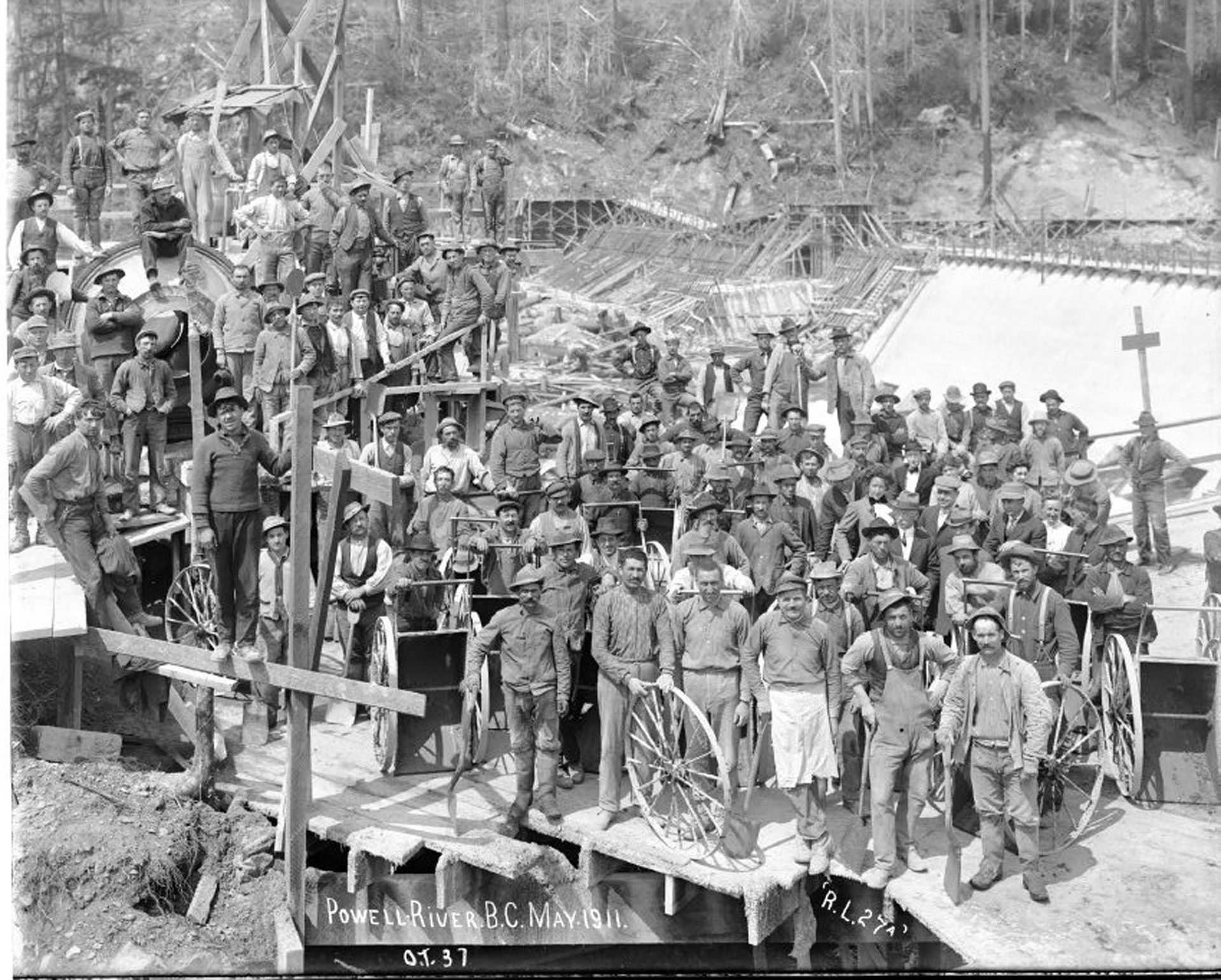
Construction workers at the Townsite dam. 1911.
Construction of the first pulp and paper mill on the west coast of Canada attracted labourers of many ethnic backgrounds from 1910 onwards. The dam allowed water from Powell Lake to flow through the penstocks to generate electricity for the paper machines.
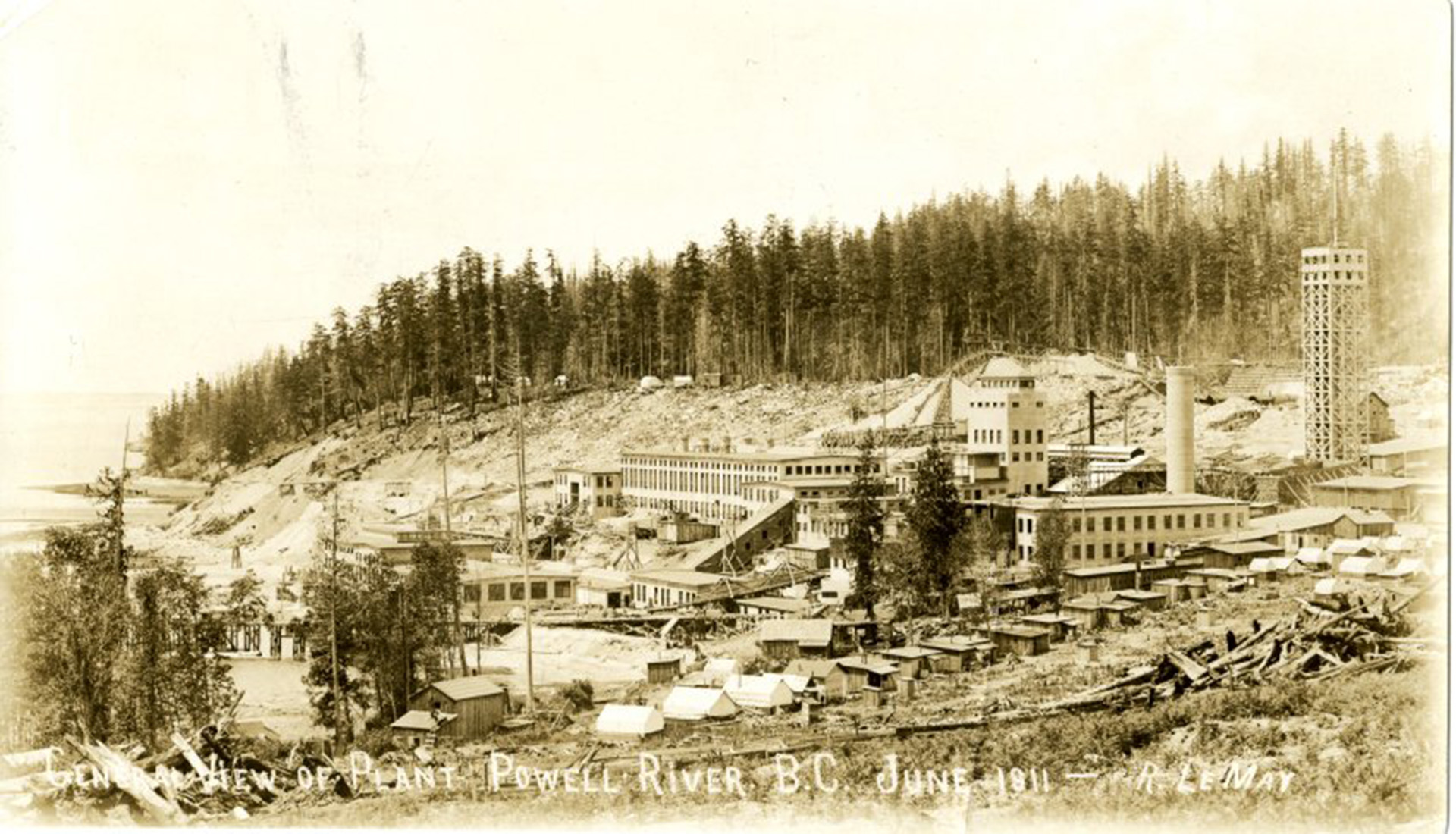
The Powell River Company Mill in 1911 with bunkhouses in foreground.

The Powell River Company logging train “Boris” with crew, 1911.

Powell River Townsite family portrait with Douglas fir in background, 1912.
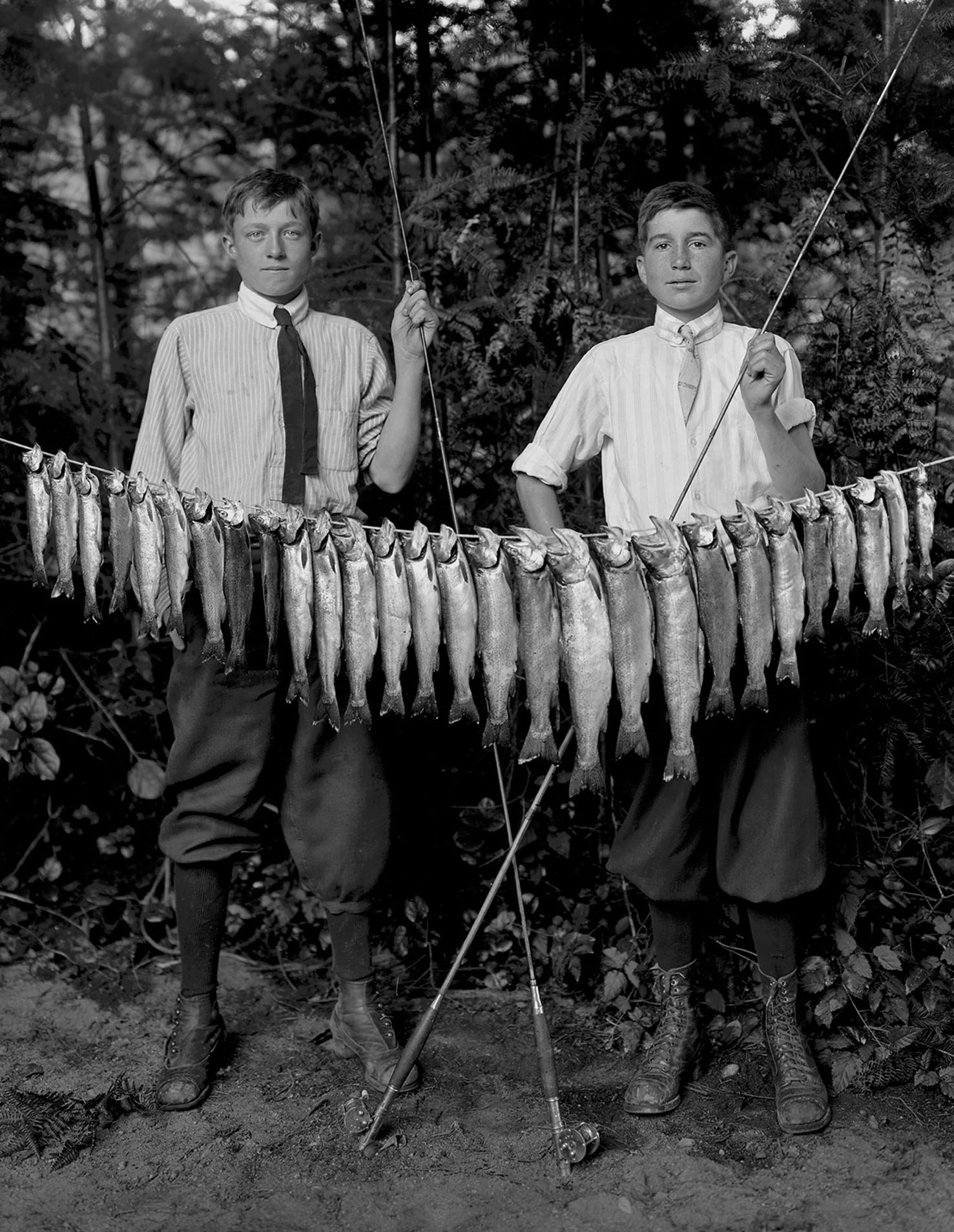
Dressed in their Sunday best. Powell River boys with trout, Ca. 1913.
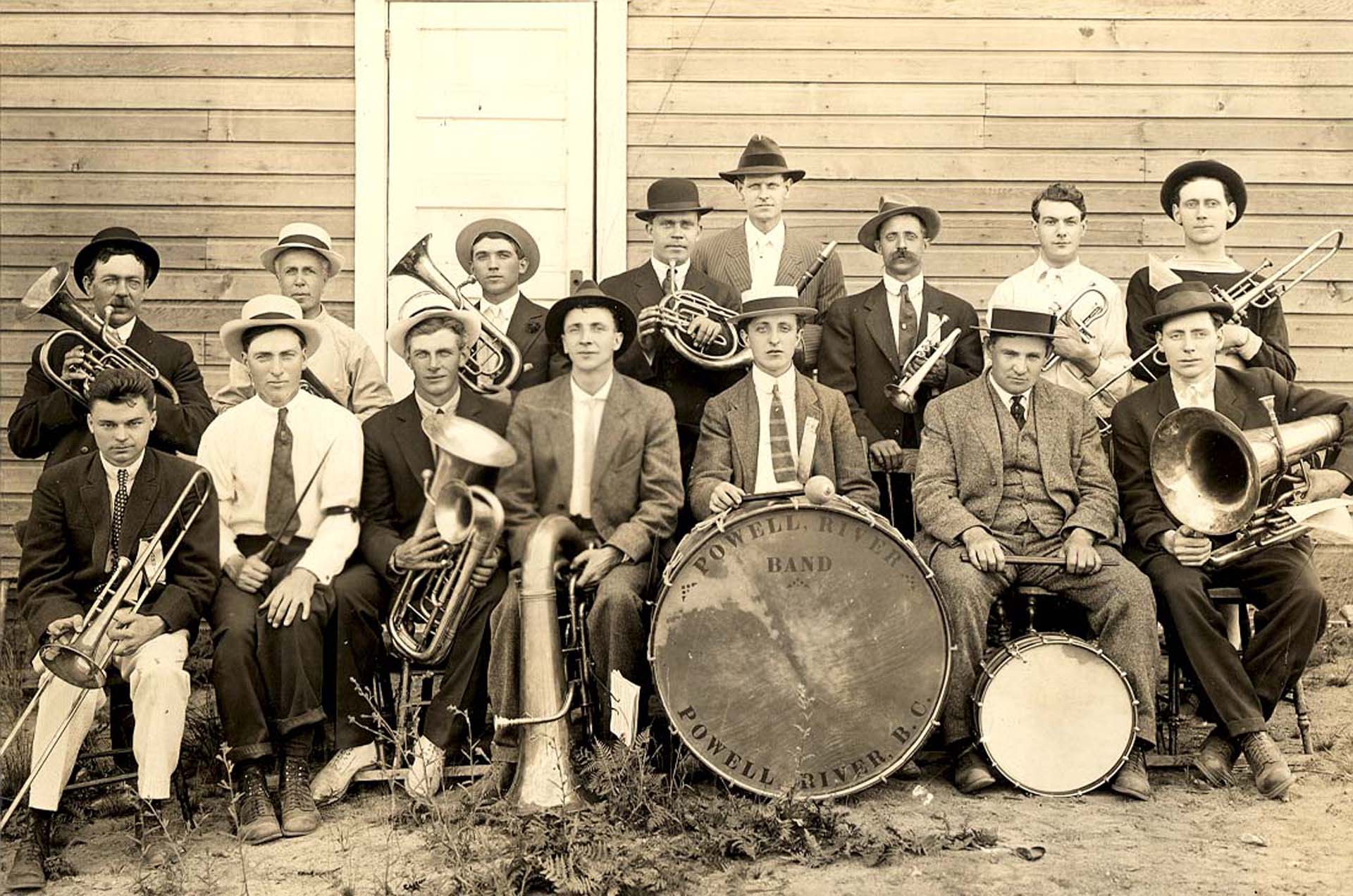
The Powell River Band 1914.
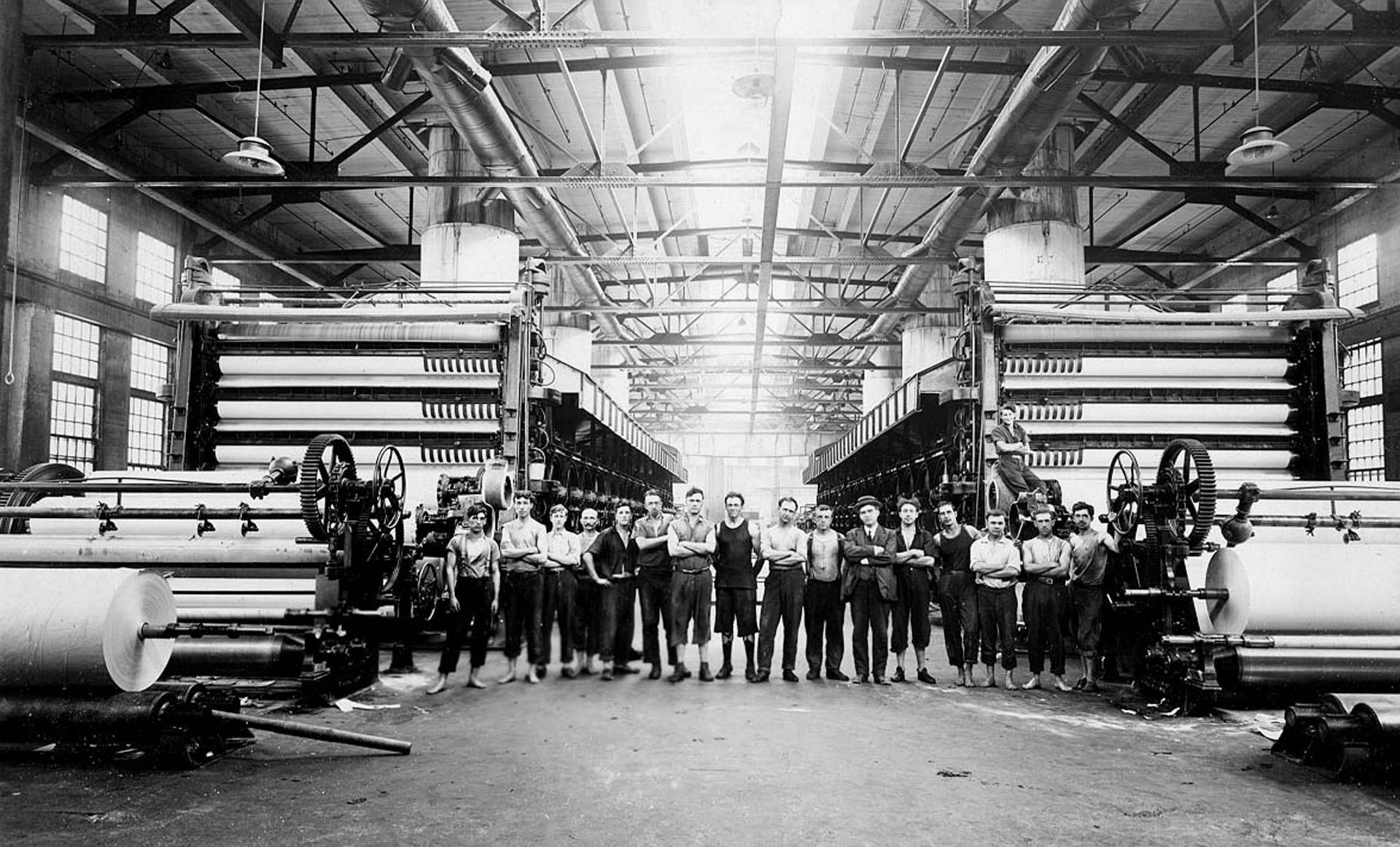
Number 3 and 4 paper machines
Crew standing between number 3 and 4 paper machines at the Powell River Company Mill in 1914. Note the occupational health and safety requirements of the time.
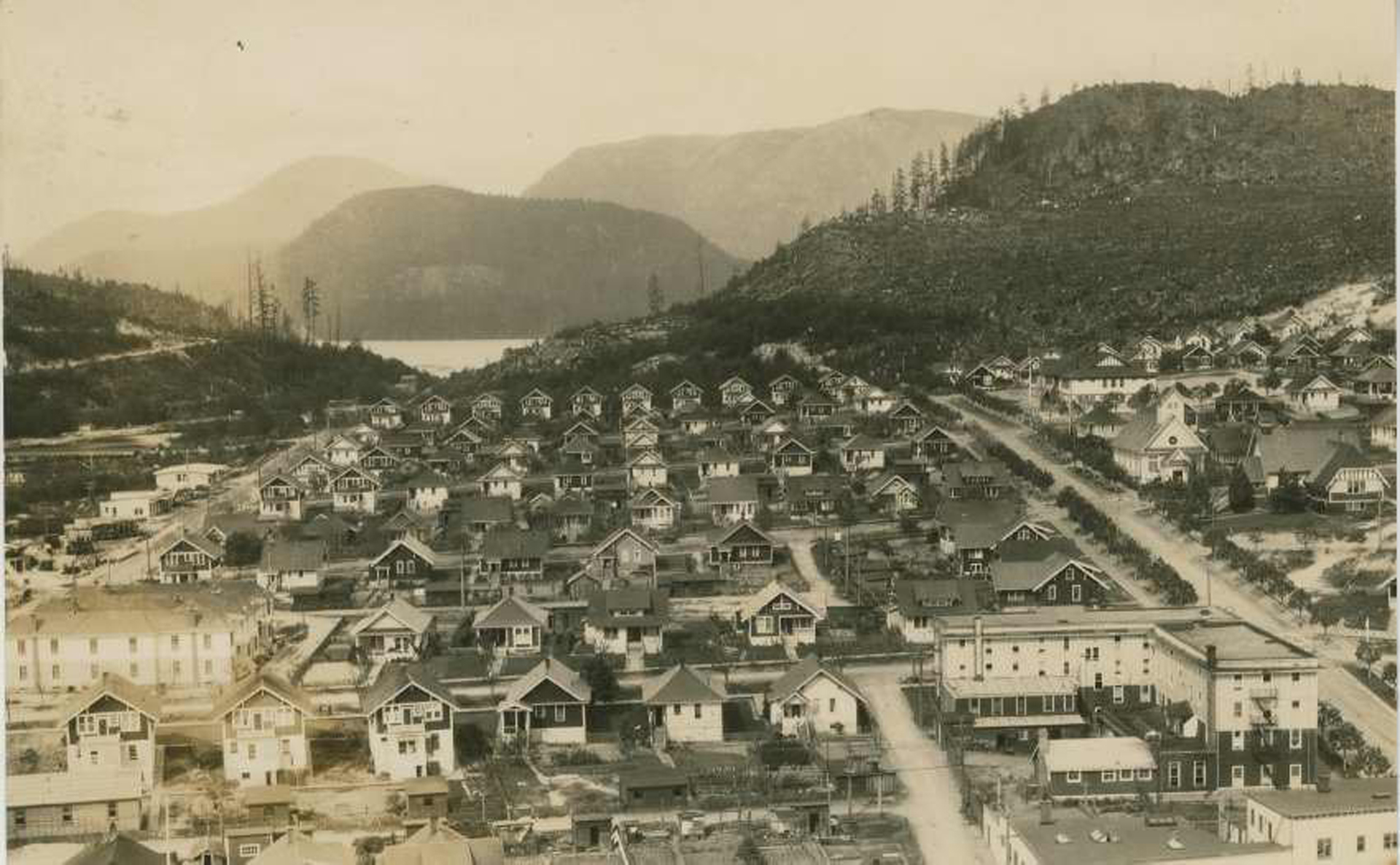
Powell River Townsite after 1914.
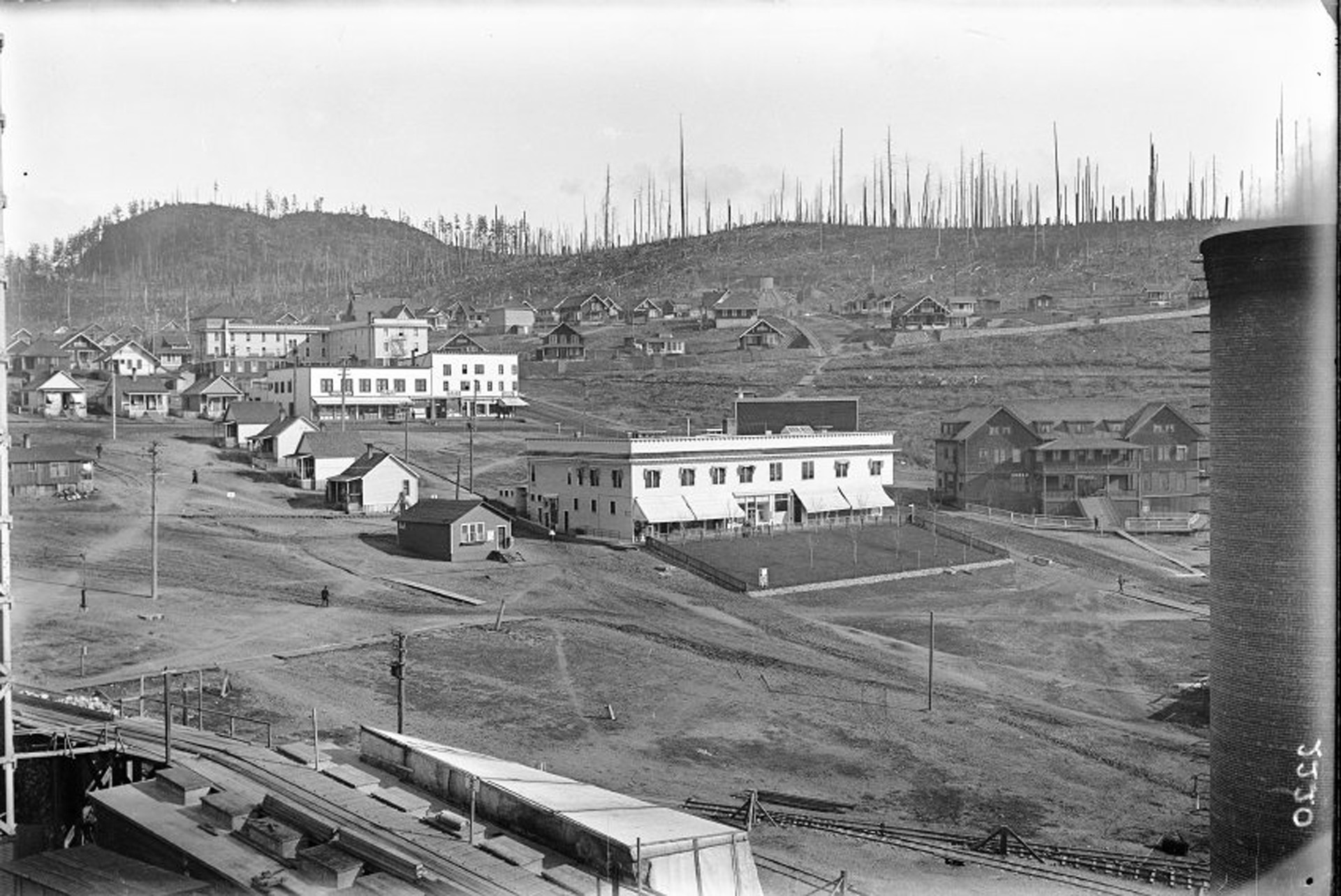
The Powell River Townsite business section in 1915.
The Central Building, the Sing Lee Building (known as China Block), the Patricia, Oceanview Apartments, and the Union Church.
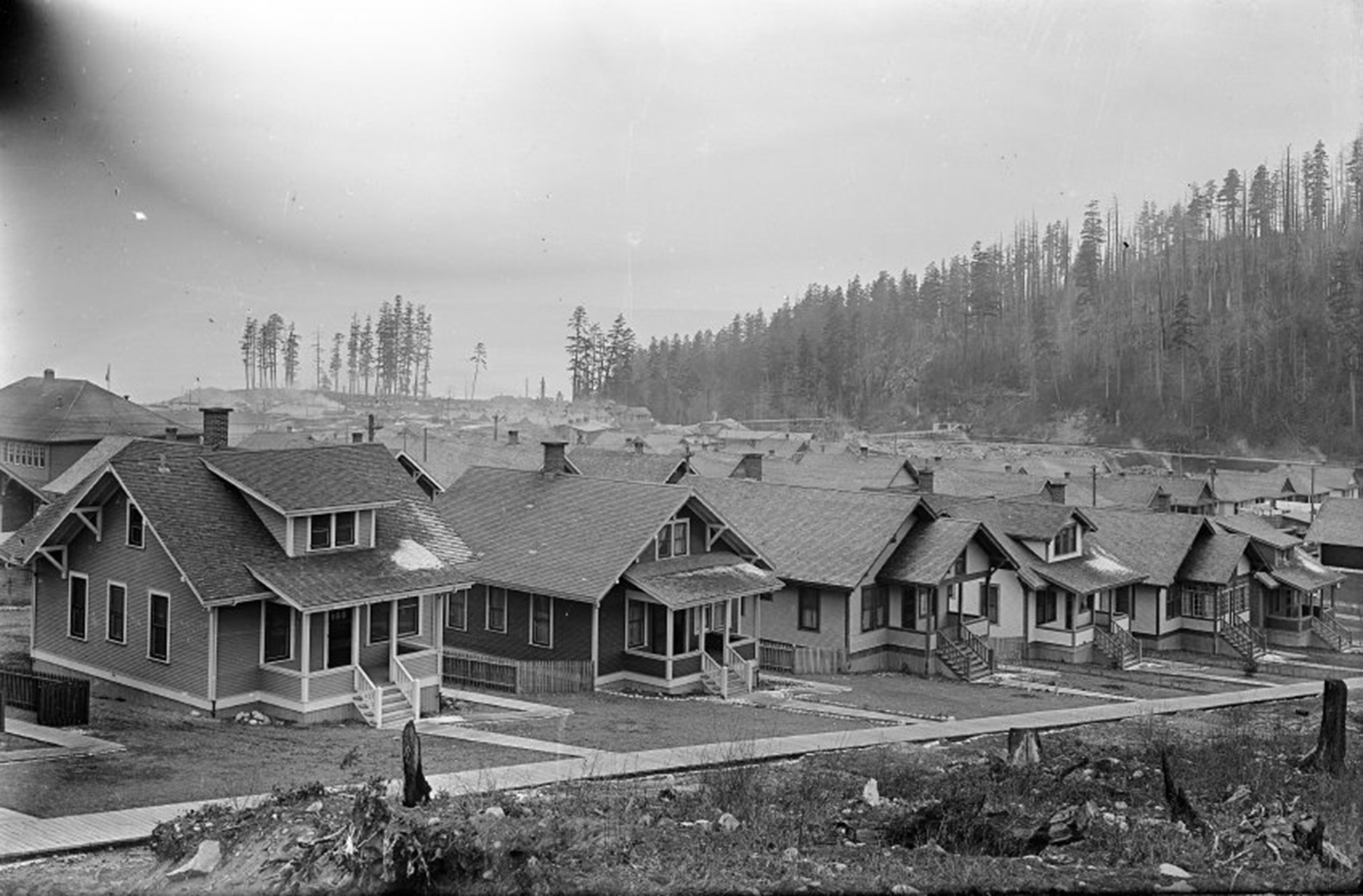
Powell River Townsite Cedar Street 200 block showing Craftsman style homes built by the Powell River Company.
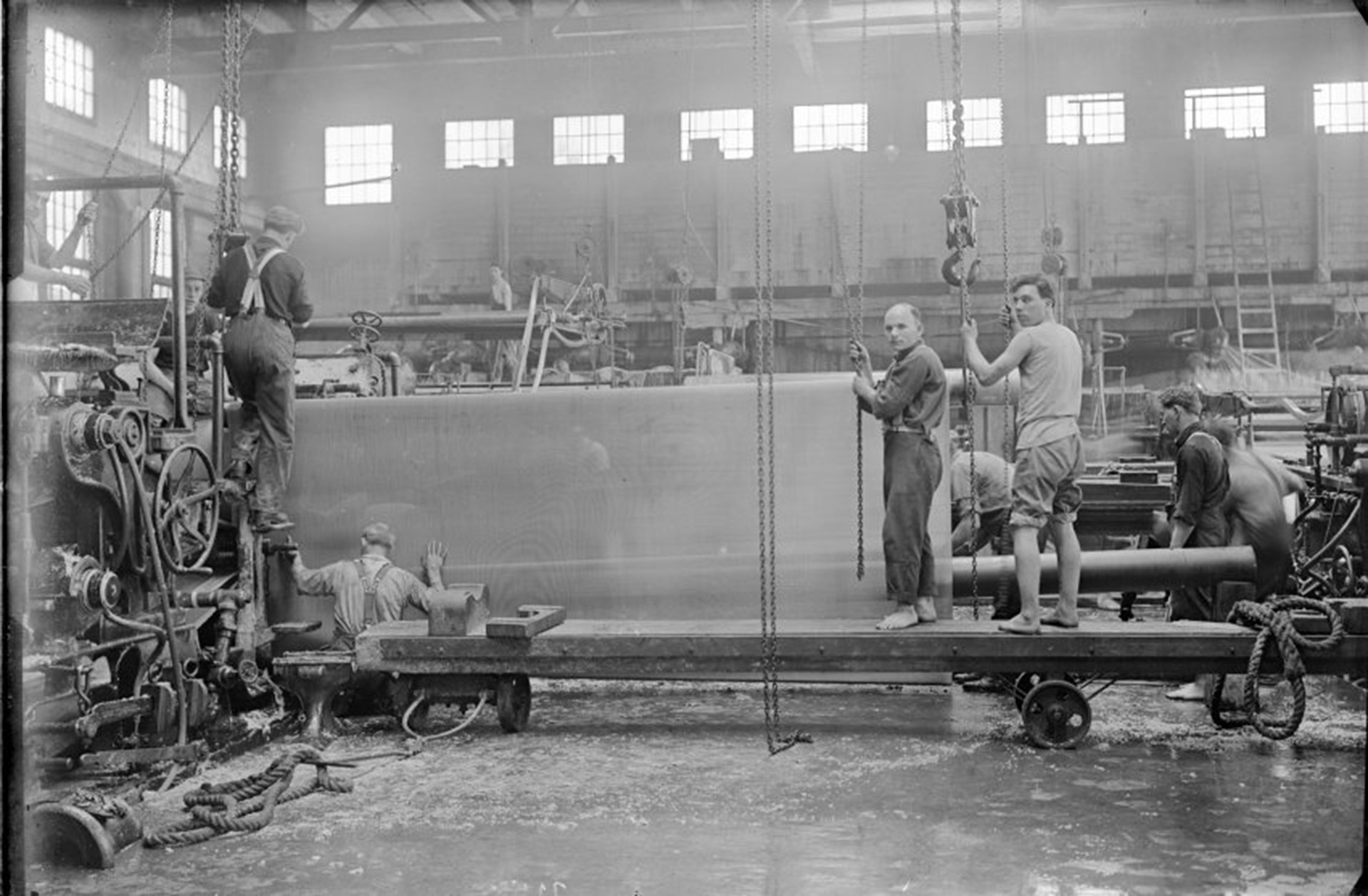
Machine Room #1 with crew at the Powell River Company changing wire screen on a paper machine, 1916.
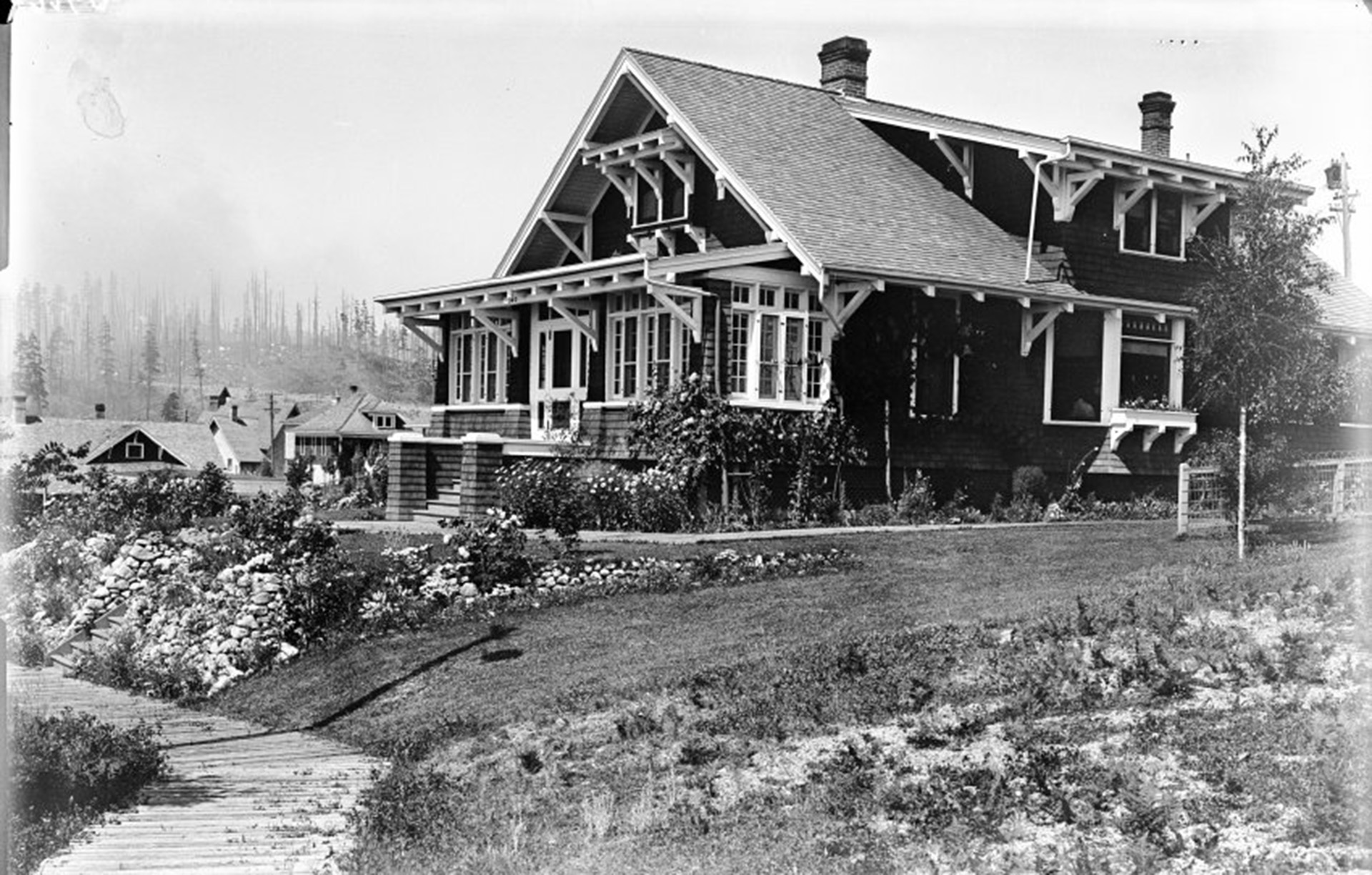
The Powell River Company Resident Mill Manager’s house at 340 Oceanview in 1916.
The street was renamed in the late 1950’ties. The house can be found today at 5814 Marine Avenue.
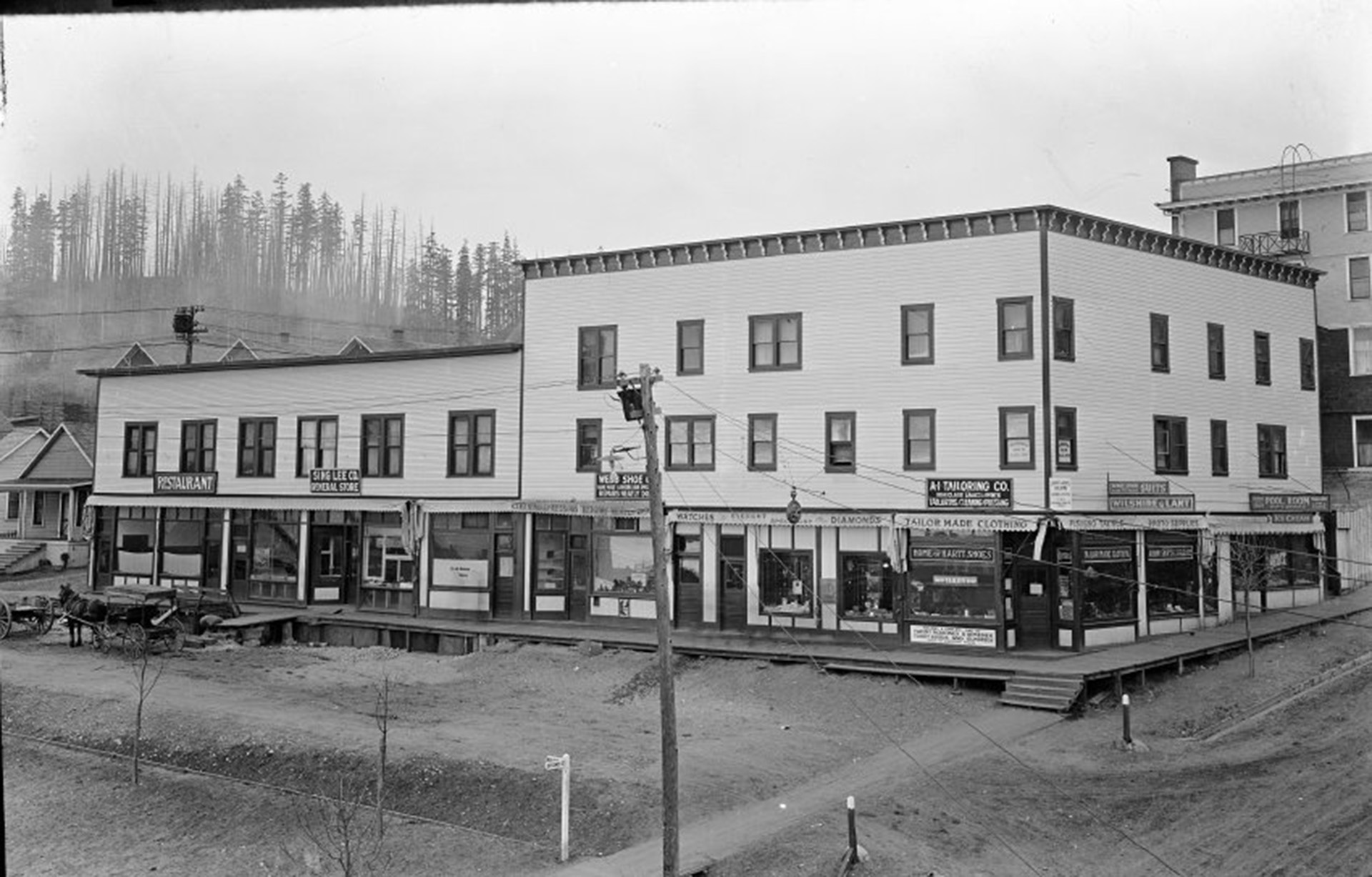
The Sing Lee Company building (known as China Block) in Powell River Townsite, 1916.
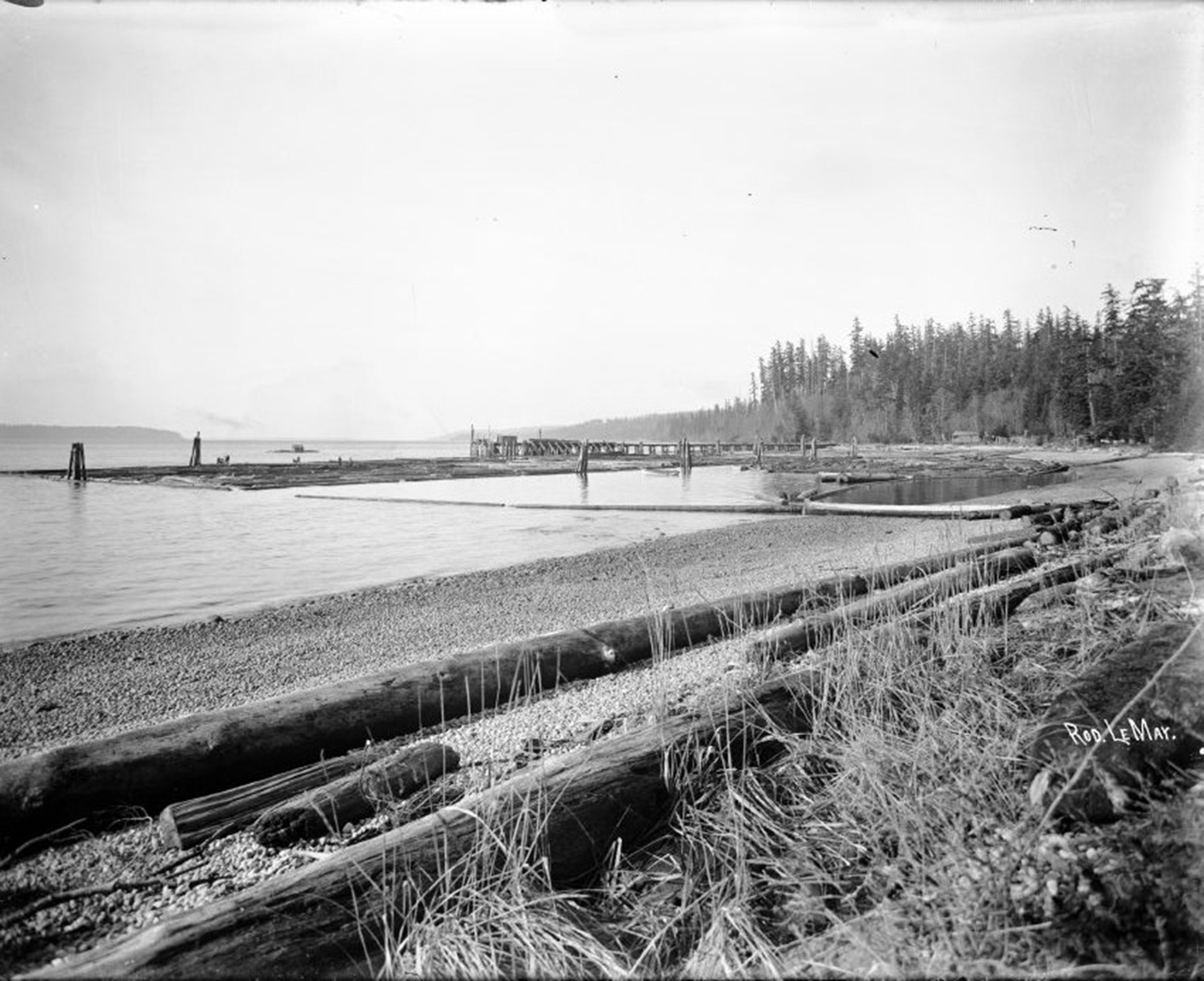
Michigan Landing (now Willingdon Beach) looking north to log dump. 1917.
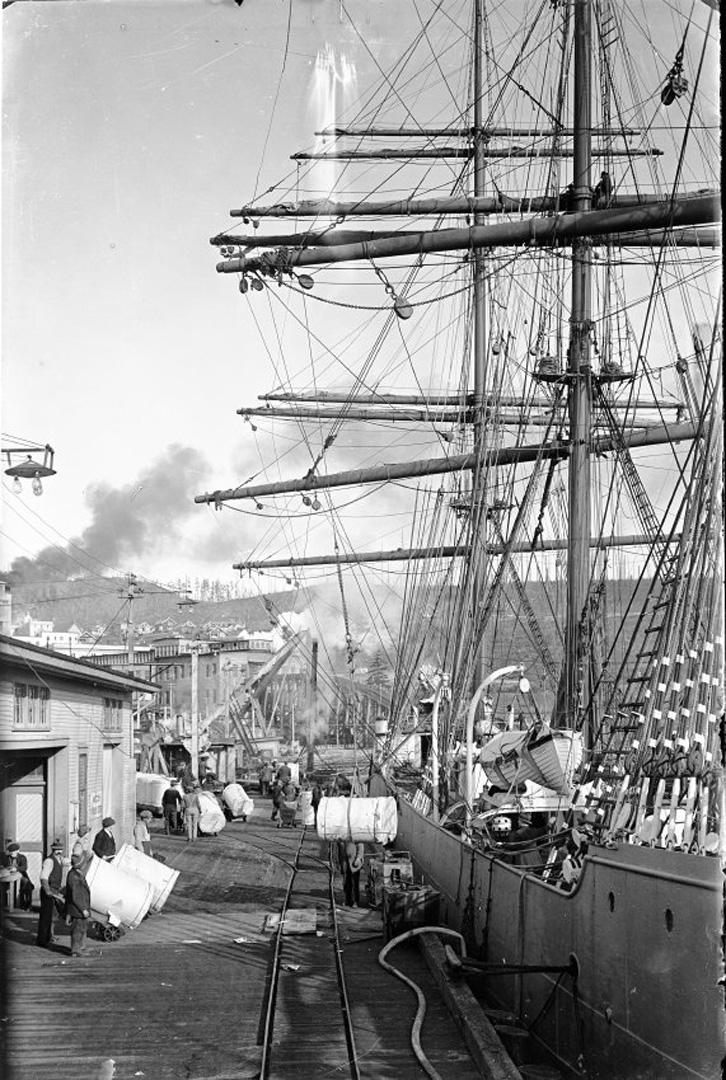
The last sailing ship to dock at the Powell River Company Mill, the Cardinia loading newsprint, 1918.
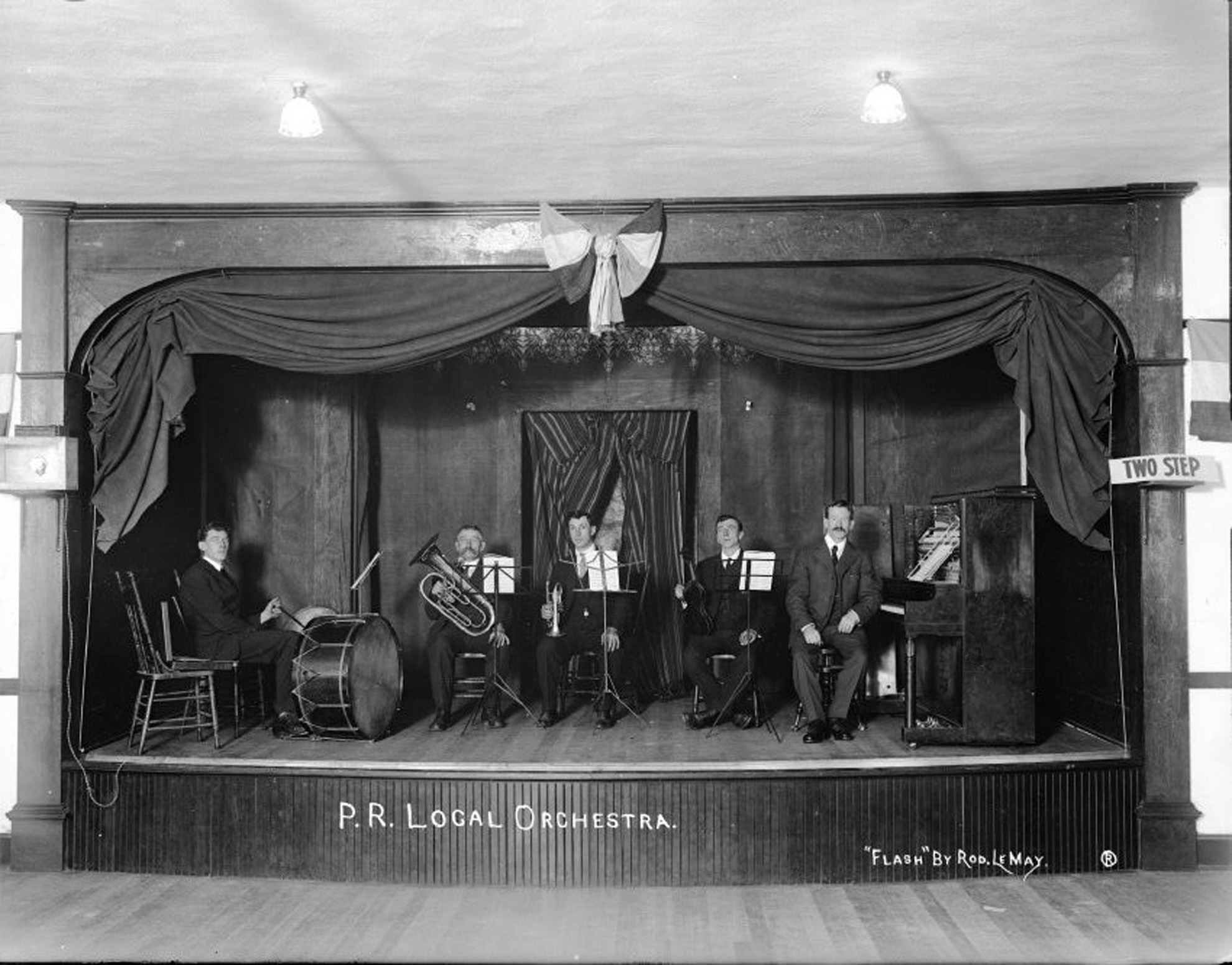
Powell River Orchestra, 1919.
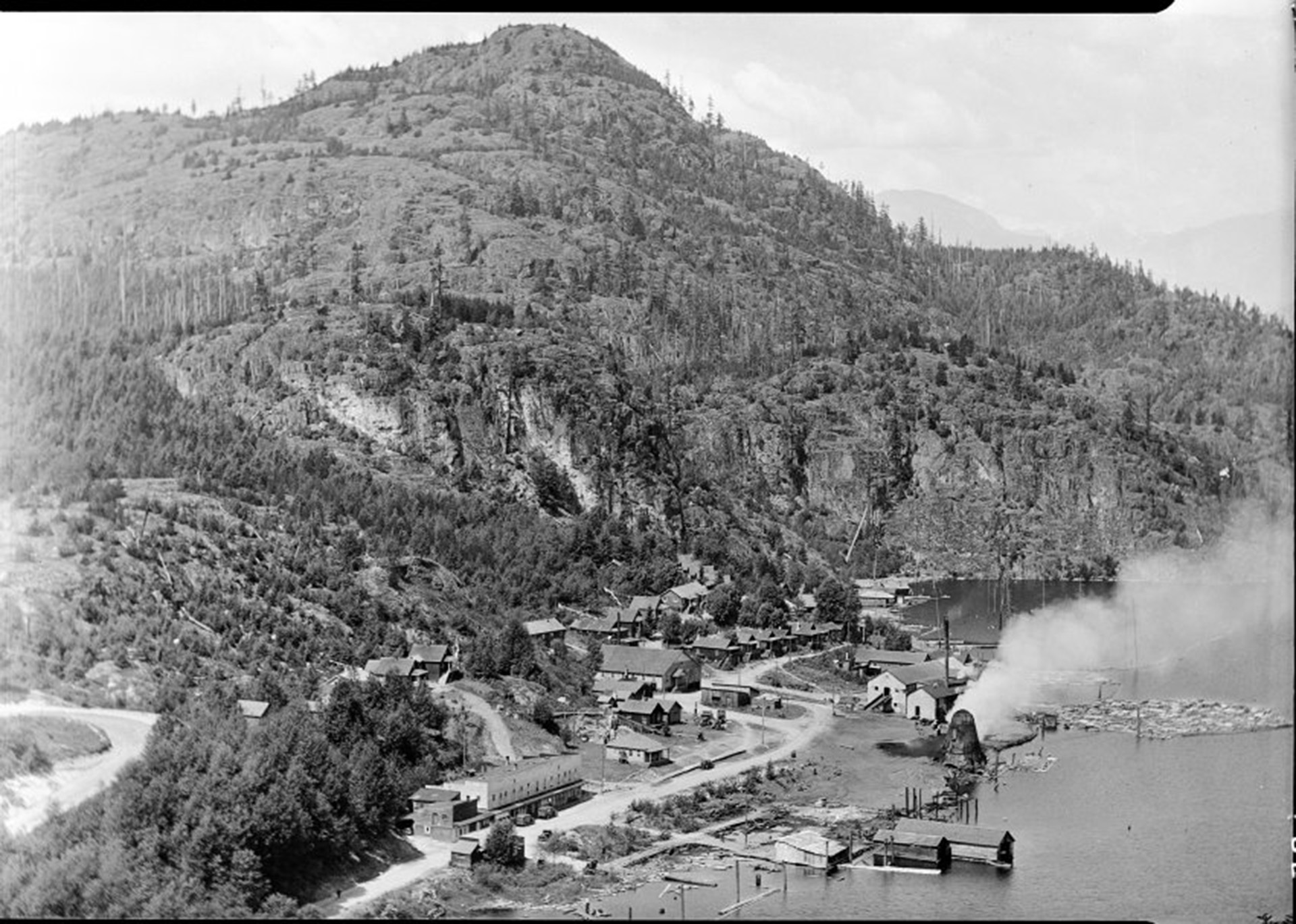
Shingle Mill on Powell Lake, 1924.
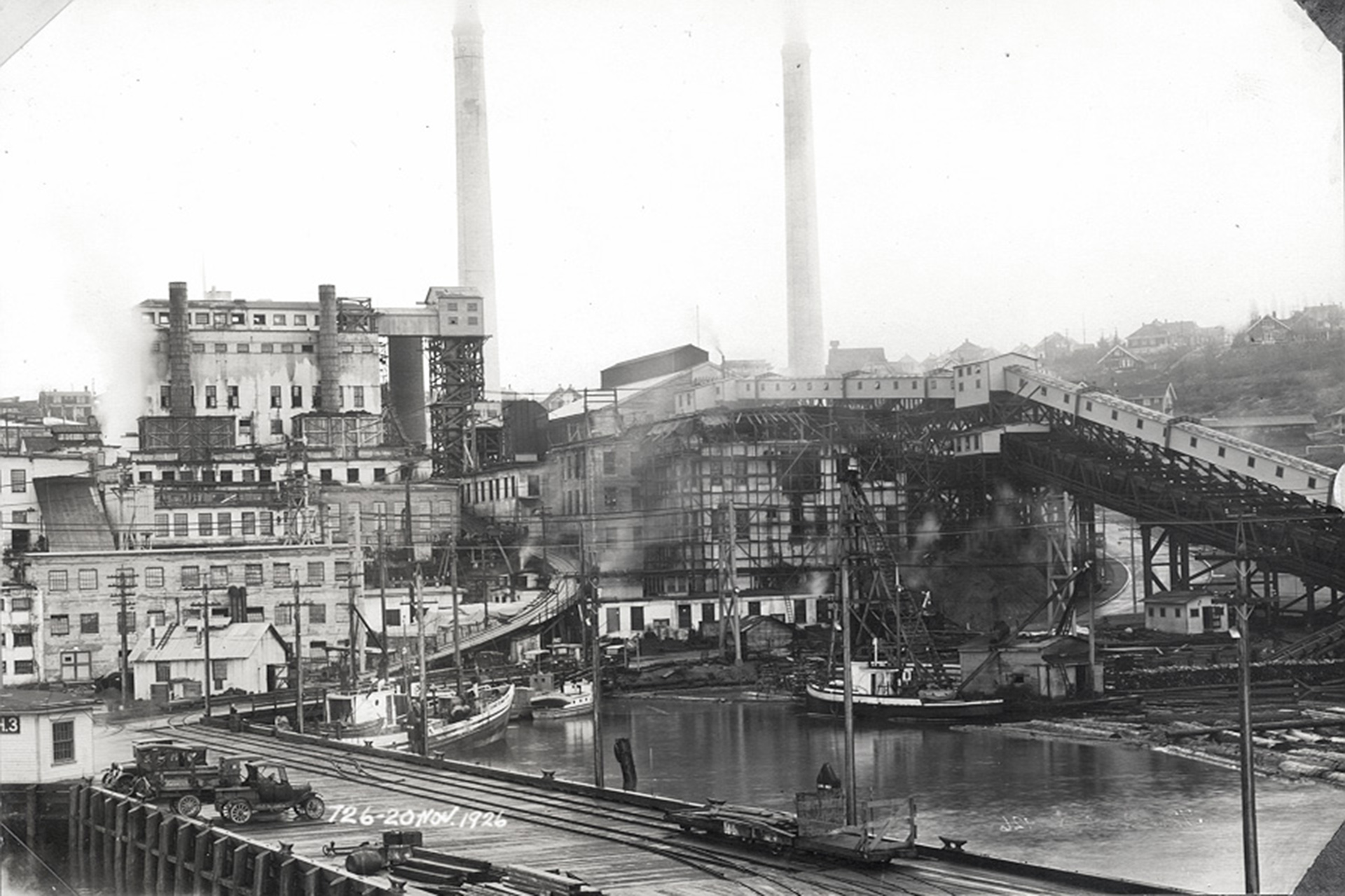
View of the Powell River Company Mill, 1926. Model T Ford wagons are parked on the wharf.
Powell River Historical Museum & Archives (2007.50.4418). Photographer Maud Lane.
